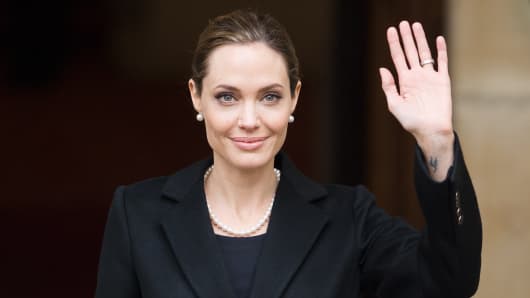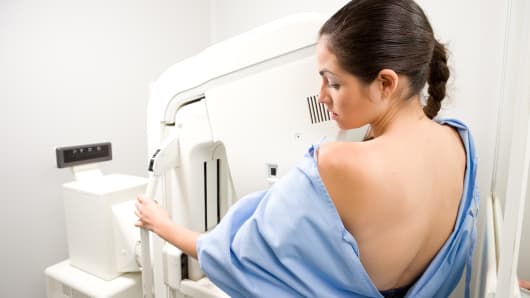Angelina Jolie's surprising announcement that she'd had both breasts removed to reduce her risk of getting cancer has brought renewed attention to the controversial procedure.
Rates of women who are opting for preventive mastectomies have increased by an estimated 50 percent in recent years, experts say. And surveys show they are happy with the decision.
But many doctors are puzzled because the operation doesn't carry a 100 percent guarantee, it's major surgery—and women have other options, from a once-a-day pill to careful monitoring. Women can take tamoxifen or one of several newer drugs called aromatase inhibitors and reduce their risk by as much as 50 percent.
For Jolie, the chance to prevent cancer was worth losing her breasts, she wrote in The New York Times.
Like many other women having the procedure, Jolie, who is 37 and a mother of six, says she did not want to live in dread of the cancer that killed her mother at age 56. "I decided to be proactive and to minimize the risk as much I could," she wrote.
Since genetic tests for breast cancer risks have become available, the numbers of women choosing to be tested and then to have their breasts removed has shot up, says Dr. Todd Tuttle, chief of surgical oncology at the University of Minnesota.
Jolie said she had a mutation of the BRCA1 gene, which raises the risk of both breast and ovarian cancer. "My doctors estimated that I had an 87 percent risk of breast cancer and a 50 percent risk of ovarian cancer, although the risk is different in the case of each woman," she wrote.
In Jolie's case, her decision was "absolutely indicated," said Tuttle. At 37, Jolie is young to worry about breast cancer. But studies also show that the younger a woman is when she develops breast cancer, the more aggressive the disease is.
Other genes can raise or lower the risk that BRCA1 and BRCA2 mutations confer. And these mutations are rare. The U.S. Preventive Services Task Force recommends that only women with a strong family history even think about getting a BRCA genetic test—which is only 2 percent of U.S. women.
But why are so many women opting for surgery when survival rates for breast cancer are 93 percent if it's caught at the earliest stages and 88 percent at stage one?
More From NBC News:
Angelina Jolie: I Had Double Mastectomy
Jolie Isn't Alone: Celebrity Cancer Battles
Government Appeals 'Morning-After Pill' Ruling
"I have postulated that one of the downsides of breast cancer awareness is that there is a situation of hyperawareness. Women in the United States are just assuming they are going to get breast cancer," Tuttle says. The actual rate is about 12 percent. About 1 in 8 U.S. women will develop breast cancer, and while 230,000 women were diagnosed with breast cancer last year, just under 40,000 died of it.
It's hard to determine the precise number of women who are opting to have surgery for a medical condition they don't yet have. Private insurance companies have the best information, and there's not an easy way to get it and compile a database.



